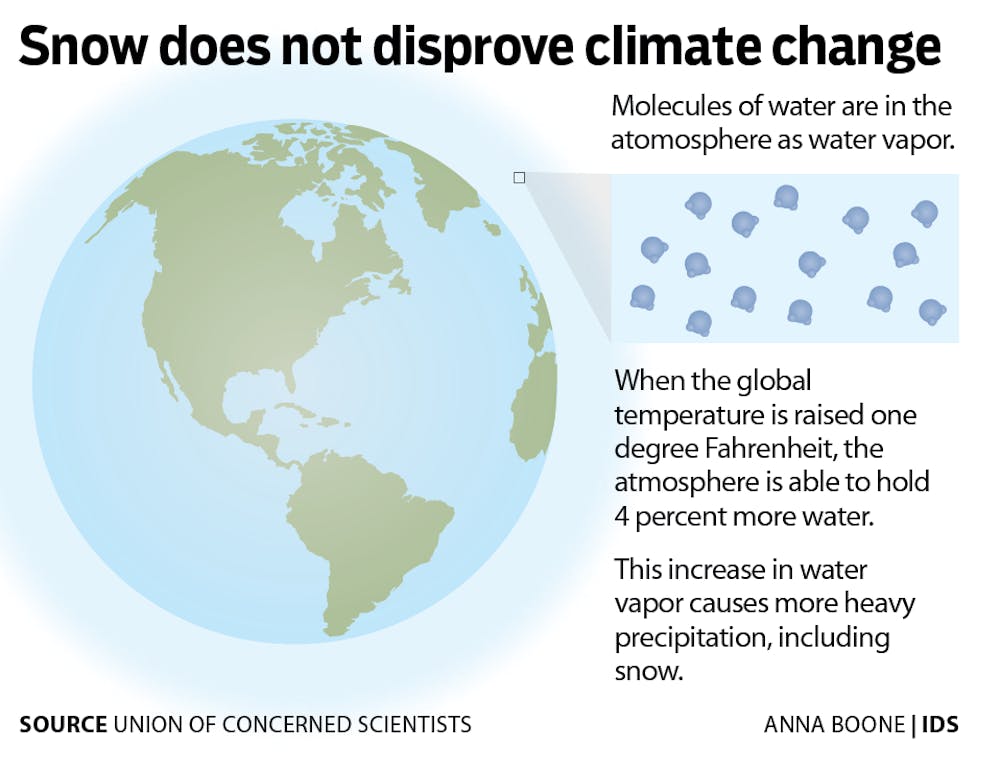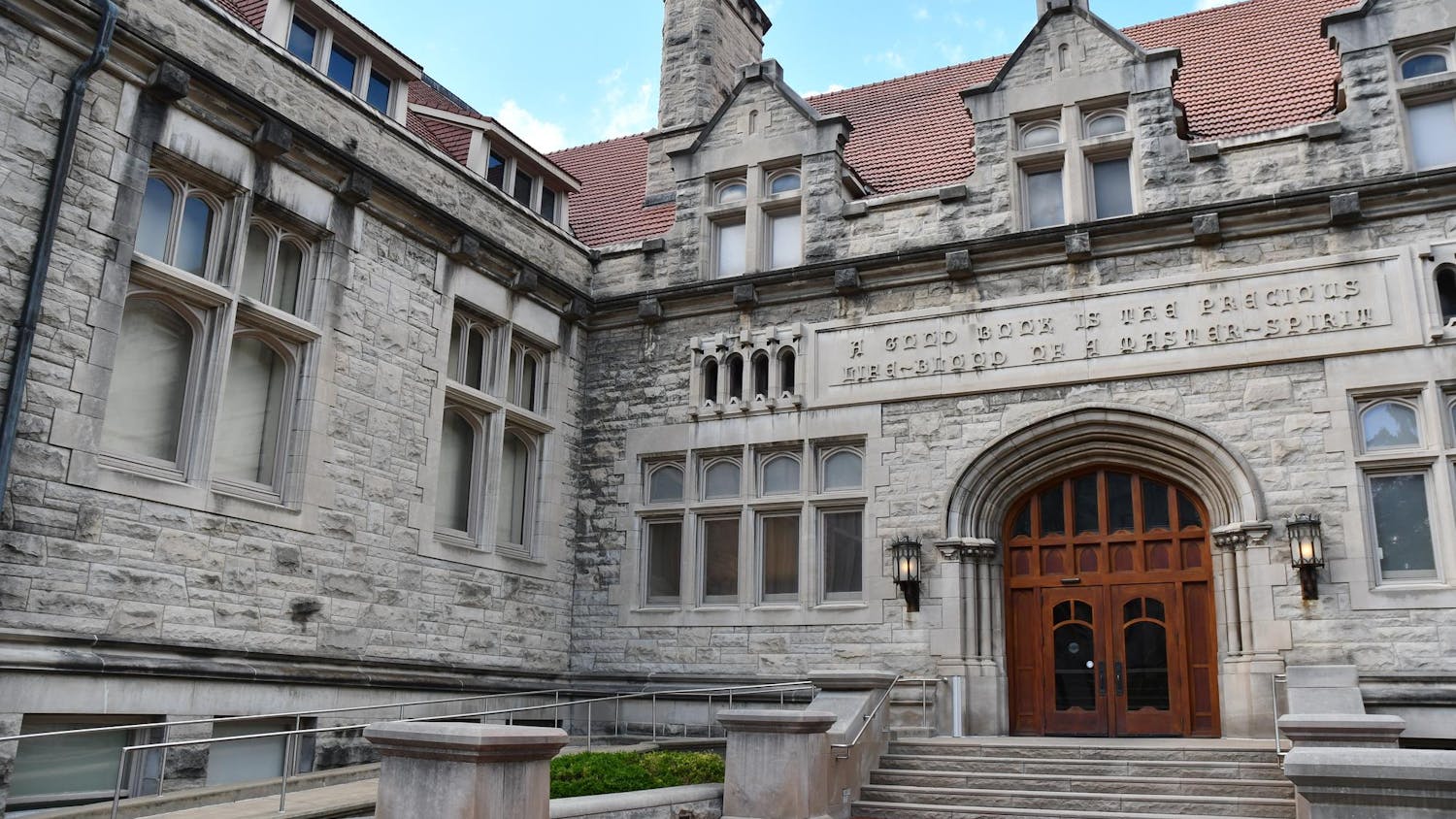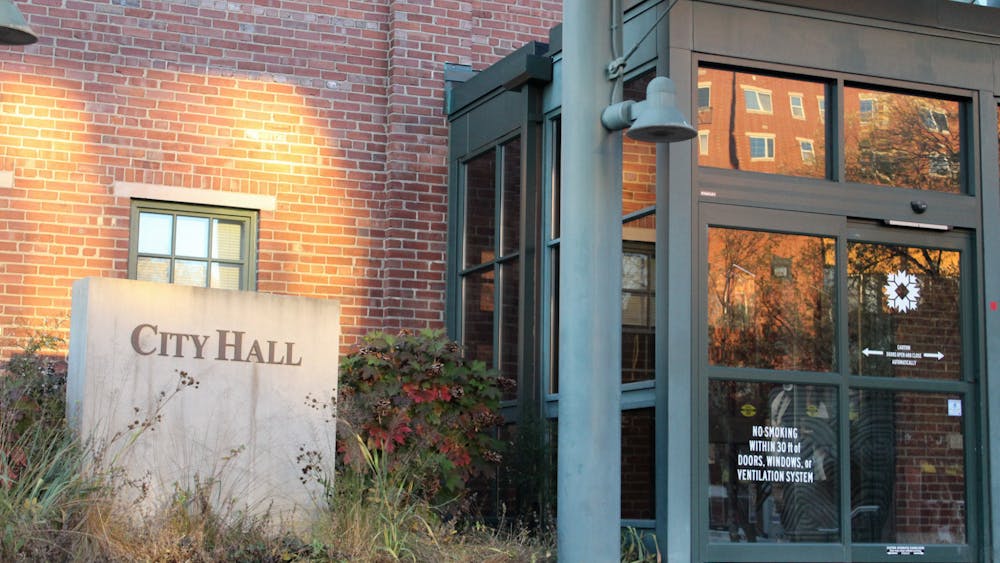However, scientists across the country are saying these blizzards and snow days sweeping the nation may actually be results of a heating planet.
“It is not inconsistent with a warming world to have more frequent and more extreme events with rainfall and snowfall,” said Philip Stevens, a professor at the School of Public and ?Environmental Affairs.
“One weather storm does not indicate climate change, but if this continues for years and years, then we’ll be able to say it’s a sign of ?climate change.”
According to the Second Assessment Report of the Intergovernmental Panel on Climate Change published in 1995, winter precipitation has increased by 10 percent in the last 100 years.
This trend is presumably caused by the rising temperatures in the ocean, which causes increased evaporation and larger amounts of precipitation.
“If you boil water, it will stay warmer longer than if you heat up a piece of toast,” Stevens said of the differing effects of global warming on water versus on land.
According to the Union of Concerned Scientists, the atmosphere is able to hold 4 percent more water every time the temperature rises by 1 degree Fahrenheit.
As the planet heats up, the atmosphere holds more water and then proceeds to dump it on the ground in the form of torrential rains and snowfalls.
In the Midwest, the number of days with heavy precipitation has increased by 27 percent in the past 50 years, and scientists predict the pattern will continue.
The 2009 Midwest Climate Change report from the Union of Concerned Scientists estimated Indianapolis will see a 35-percent increase in heavy rainfalls in the next few decades alone.
Though the increasing number of snow storms seems to serve as evidence of climate change, scientists caution against reading too much into the data.
Indiana climatologist Dev Niyogi said snow can be tricky to research.
“It’s really difficult to say what’s causing increased snow because precipitation depends on a large number of factors,” Niyogi said. “It’s not just what happens on the surface, but what happens above the surface where the clouds are formed as well as how much moisture is in the air and a host of other things.”
Niyogi did concede some evidence suggests shifts in precipitation types resulting in heavier rains and more extreme weather.
Though these changes might make us shiver through the winter, Stevens said it’s important to think of the bigger picture.
“I think it’s common to see that it’s cold in your backyard and think, ‘So how can we have global warming?’” he said. “The key word is ‘global.’ Temperatures in the U.S. are not necessarily indicative of what’s happening on a global scale. When you look at the world as a whole, it’s warmer than ?average.”






